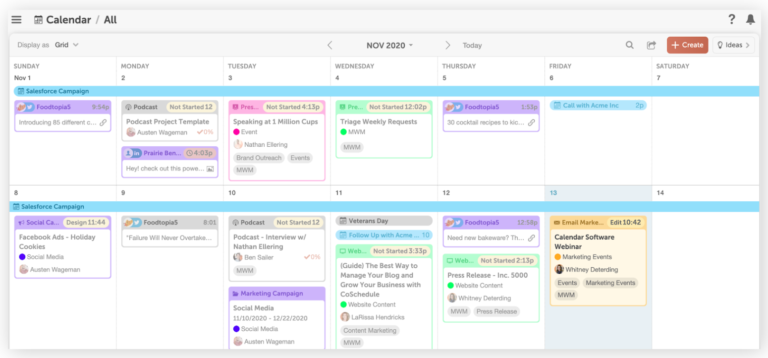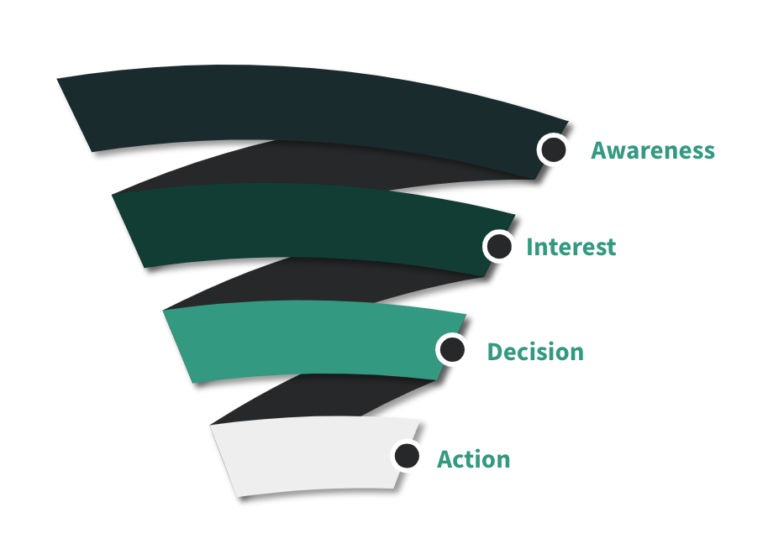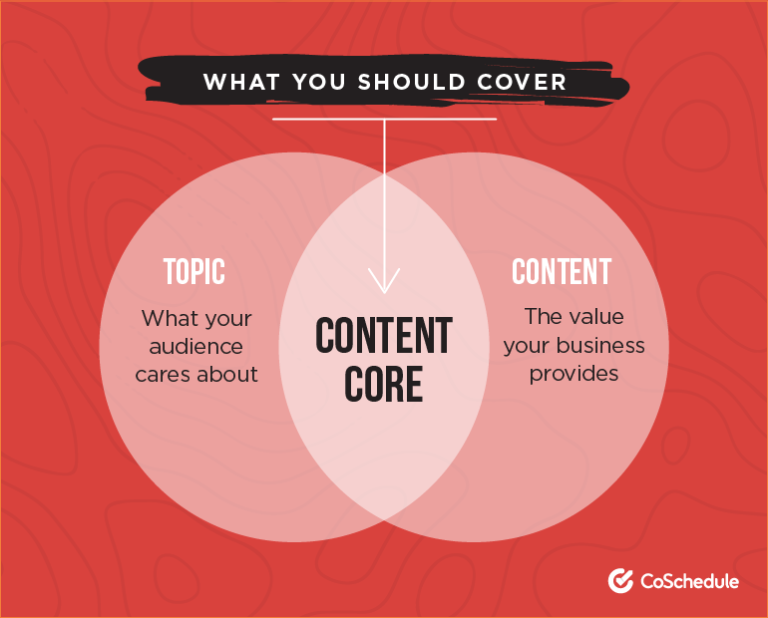We all have them: These SEO articles that bring in a majority of our traffic but never convert.
SEO professionals joke about Hubspot’s articles, like the one about the shrug emoji.
Or how about the one about writing a resignation letter?
While these articles rank in the top three and bring thousands of visitors every month, the conversion to marketing automation software and CRM is probably poor.
And so with these articles comes a focus on vanity metrics. Yes, even organic traffic can be vanity if the traffic is not qualified.
In this article, let’s look at how you can achieve the opposite.
We’re talking about realizing business potential, finding your content core, and how you can make your customers’ issues and problems the heart of your content marketing strategy.
Advertisement
Continue Reading Below
The benefits of this approach are:
- Positioning your tool or software as the irreplaceable solution to your customers’ problems.
- Educating prospects on how to use your tool and which benefits they can expect.
- Supporting acquisition by qualifying prospects as the pieces improve users’ awareness level and understanding.
- Improving retention as you educate existing users on how they can use your tool creatively.
Let’s talk about generating qualified traffic that is ready for conversion.
Understanding Product-Led Growth
Product-led growth means that your company’s strategy for finding and converting new leads and customers is focused on your product.
Your growth comes from customers loving your product (and talking about it), and not from ebook downloads or white paper views.
Instead of focusing on the three main funnel stages (top of funnel, middle of funnel, bottom of funnel), you focus on the business potential of each marketing activity.
It’s an approach that works; companies that became known for a product-led growth strategy include Slack, Dropbox, Typeform, MailChimp, and Loom, among others.
Dr. Fio Dossetto defines product led-content marketing as:
“Content where the product is woven into the narrative to illustrate a point, solve a problem and/or help accomplish a goal.”
Advertisement
Continue Reading Below
Product-led content marketing sits at the intersection of content marketing, product development, and customer success.
Bear in mind: These are still blog posts and pillar pages. We are not talking about a sales page optimized for conversion.
In the SEO space, one company that became known for product-led growth and content marketing is Ahrefs.
CMO Tim Soulo says:
“All we care about is business potential. To assess the business potential of each keyword and topic, we’ve developed something we call the Business Potential Score. And we only try to target topics where our product is an almost irreplaceable solution to the problem.”
The three levels of the business potential score are:
- Your product is an almost irreplaceable solution to the problem.
- Your product is helpful but the problem can be solved without it.
- Your product is barely relevant to the problem.
As you might have guessed, the “shrug emoji” piece is barely relevant to Hubspot and the problems it is trying to solve.
So, let’s look at some examples where content marketers got it right instead.
Enticing Product-Led Content Marketing Examples
The SEO tool Ahrefs has an article targeting the term [keyword research]. The article explains the process in detail and gives many creative ideas on how to find new keywords.
But of course, they illustrate the process with their own tool. It is the perfect combination of an educational helpful article and highlighting one of the main use cases of the software.
The tool is woven into the narrative very smoothly.
Of course, Ahrefs is not the only tool to do keyword research, but they highlight how effective you can be when using it.
Coschedule is using a similar approach in their article targeting the term [annual content calendar].
Advertisement
Continue Reading Below
You could create a content calendar in a spreadsheet (and they show you how) but they also highlight the challenges that Coschedule can solve better than a spreadsheet (messiness, different views, ownership, deadlines, to name a few).

Similarly, Thrive Themes show us [how to create a landing page] by using Thrive Themes.
If you are ready to reap the rewards of product-led content, follow along for the step-by-step process.
Advertisement
Continue Reading Below
Product-Led Content Marketing Step-By-Step
The process to create a product-led piece of content looks like this:
- Research problems and issues.
- Define your content core.
- Evaluate the business potential of each idea.
- Outline the article and weave your product into the narrative.
- Choose a Call-to-Action.
Let’s dive in!
1. Start With the Problems and Issues
Your product exists because you are solving a problem in your target market.
So, the buying journey of your customers always starts there: Their problem.
Most potential customers will be problem-aware.
They know that they want to increase employee engagement, share files online without producing duplicate versions, or build a landing page without knowing how to code.

As they start researching, they move from being pain/problem-aware to solution-aware (internal communication tool, cloud file storage, WordPress page builders) and finally to product-aware (Slack, Dropbox, Thrive Themes).
Advertisement
Continue Reading Below
To start with product-led marketing, brainstorm the problems and issues that your customers have.
There are different techniques that can help you to do this:
- The SEO classic: Do keyword research and figure out search volume as a proxy for interest in the market.
- The customer-focused one: Start doing customer interviews and analyze your support tickets to find common issues.
At this stage of the process, every idea is a good one. We want to collect as many content ideas as possible without filtering ourselves too much.
We will refine the ideas in the upcoming steps.
Find 5-10 problem-related content ideas this week by using one of the techniques.
2. Define Your Content Core
The term “content core” was coined by Garrett Moon from Coschedule in his book 10x Marketing Formula.
The concept is focused on connecting your content ideas to the value propositions of your business and products.
“Your content core connects the dots between what your customers care about and what you have to offer them. Notice that I said “what your customers care about,” and not “what your audience cares about.” There’s a difference. Because if you’re going to get really good at generating leads and converting traffic, you have to intimately understand the customers who are already paying you.
Advertisement
Continue Reading Below
The purpose is to understand that intersection of what you do and what you need to talk about, he explained. In his book, this is represented in the image of two overlapping circles below.

Write down the features and value propositions of your product.
Now compare your content ideas from Step 1 with the values propositions.
Is there a way to naturally weave the features and value propositions into the article?
Advertisement
Continue Reading Below
Make a simple “Yes or No” note for each article idea.
3. Evaluate the Business Potential of Each Idea
For this step, let’s focus on those articles that you selected for your content core.
We want to further assess how well this article can support your growth.
Remember the scale for business potential from Ahrefs?
- Your product is an almost irreplaceable solution to the problem.
- Your product is helpful but the problem can be solved without it.
- Your product is barely relevant to the problem.
For each idea, select the importance of your own tool.
BTW, it isn’t about getting this 100% perfect. Of course, there will always be edge cases and this scale is very subjective.
The goal is not to spend too much time picking the right business potential.
Instead, separate these content ideas where your product is irreplaceable from the ones where you are barely relevant to the problem.
We are basically refining your content core and prioritizing your content calendar.
Advertisement
Continue Reading Below
Our top priorities will be the ones where your tool is a unique and irreplaceable solution to the problem.
Add priority score to your content ideas now. This should take less than five minutes.
4. Outline the Article and Weave Your Product Into the Narrative
When creating a content outline for my clients, I include the following information:
- Focus and supporting keywords.
- Content-type and estimated word count.
- Headline outline.
- Internal linking recommendations.
- Best-performing website on Page One for comparison.
For a product-led article, you will want to focus on how to weave your product into the narrative.
This is best done by refining your headline outline.
Here are a few tips:
- When in need of examples, make sure to match your target audience.
- When explaining a principle or concept, always add a use case that is relevant to your customers.
- When creating a step-by-step process, make sure to add screenshots, videos, and examples of how this can be done using your tool.
Advertisement
Continue Reading Below
Make sure that you aren’t switching to purely promotional sales copy when doing this.
This is not your sales page and the article must meet search intent and be relevant to your audience.
Long-form sales copy is not what we are looking for here.
You will want to create an educational article that is genuinely helpful but make sure to highlight that this can be achieved easier, faster, or more effectively when using your tool.
Let the features and value propositions speak for themselves.
Start a content outline for your article with the highest business potential.
5. Choose a Call-to-Action
Product-led content is a great opportunity for in-line CTAs (sometimes also called native advertising). Who will read a CTA that does not pop but that is purely part of the copy?
Well, the person reading the copy!
Make sure that your articles have one in-line CTA as well as a pop-up or buttons after the first and last paragraph.
These CTAs should always lead to your product. No, not a white paper or ebook or template.
Advertisement
Continue Reading Below
Make sure the CTA leads to the feature or product that matches what you talked about.
In their keyword research article, Ahrefs links to their “Keyword Explorer” feature. It would not make sense to send people to a general sales page or the “Backlink Checker”.
A CTA works if it is congruent to the article and the problem that you just highlighted.
Add a note to your content outline about what CTA to use now.
Summary
In short: Product-led content marketing is your opportunity to support acquisition, educated prospects, increase retention, and get qualified conversions.
Make your product part of the story and focus on your customer’s issues to implement product-led content successfully.
Happy ranking!
More Resources:
Image Credits
Image 1: ahrefs
Image 2: Coschedule
Image 4: Coschedule

